Our adventure down scenic route US 395 moved us into snow cover and white as far as the eye could see. Only 395 was open through this winter wonderland. Highways into Yosemite and old mining towns as the historic Bodie were all closed.
395 began as a series of wagon trails, game paths and paths created by the
Indians extending from San Diego to Canada. Modern highways have obliterated some of the original road. We followed the original from Nevada to Bishop,Cal.
Our first stop was Meadowcliff Resort surrounded by a rugged outcrop of rocks in sharp contrast to the Aspen valleys we were passing through. Here I again bought books describing the lives of those who had settled along this Highway. In todays world of conveniences it is hard to understand why these early settlers chose to endure the harsh changes in climate to eke out a living for their families. But they did survive and their stories are an inspiration for the demonstrated courage, can do spirit and will to survive.
Continuing our journey we passed through the unpretentious town of Bridgeport. Main Street houses the Historic Bodie Victorian Hotel. Originally a brothel, it was moved to Bridgeport in 1886 when Bodie was declining. Today it is still a hotel with lots of antiques located across the street from the historic County Courthouse. The town, with it's 1880's buildings, was the set for the 1947 movie "out of the past" staring Kirk Douglas and Robert Mitchum.
This scenic road passes through 700,000 year old Mona Lake, one of the oldest in North America. The lake is popular for it's "tufa towers", calcium deposits formed by underwater springs, exposed when water diverted to Los Angeles dropped the 60 square mile lake by 40 feet. A lengthy legal battle was successful in 1994 in securing protection for the lake and it's tributaries. Increasing water levels are beginning to re-capture the "towers".
Farther south Lake Owen was not so successful. When Los Angeles bought up the water rights in the agriculurally prosperous Owen Valley diverting the river and it's tributeries, orchards and farms dried up and died and so did the Lake.
We eventually descended into the north end of the 145 mile long Owen Valley to Bishop, CA. Bishop calls itself "America's Coolest Mountain Town" and boasts a town full of historic murals supported by the Bishop Mural Society.
In Bishop I sought the help of a dentist to replace a lost cap. I was treated to a rant about lawyers from the East and a Nation of crime because of the immigrants and how he had been in business for 44 years and on and on. He did not get my business but convinced me to change my course of travel north to Jackson, Wy. Where I thought I had friendly contacts.
On the way north we stopped at Laws, once a major railroad station. The village is now a museum and features the" Slim Princess " locomotive which made it's last run in 1960. This location was also a prop for movie "Nevada Smith".
It would be two more days of travel through the desolate Nevada landscape, over roads with no service for 160 miles, through "extra terrestrial" territory to Ely, the city of the Black Swan, across the Great Salt Lake and the Emmigrant Trail to Evanston, WY with it's restored railroad station and meandering old Lincoln Highway before we would reach Jackson, Wy.
And that is another story.
To Nevada
By Feb. 25, restrictions on the passes were lifted and we left Tahoe following Rt. US. 50 into the broad Carson Valley east of the Sierras. At the junction with US 395 it was time to decide to turn north or south. I chose the scenic road south.
Several miles south a brown sign noted an historic site. "Let,s see where the road goes" and it landed us in Nevadas first city, Genoa. Today Genoa is a 4 corners, end of the road, laid back country village. But in 1851, when it was founded, it was a busy supply center on the Pony Express route.
A post office opened in 1852. snow in the mountains, 20 to 50 feet deep, kept the area isolated until Norwegian John Thompson came to town. Fashioning his own skiis, for 20 years, Snowshoe Thonpson carried mail across the Sierras to Placerville, CA twice a month rarely missing a trip . A bronze statue in the town park celebrates this man.
Genoa boasts "Nevada's Oldest Thirst Parlor". Dating from the 1850's, it is listed on the National Register of Historic Places as is the town. There is also an excellent coffee and candy shop, a healthy sandwich lunch store, antique and quality gift shops, and a gourmet dinner only restaurant.
La Ferme features French Country Cuisine though the Chef and owner is Basque which loudly proclaims is not French or Spainish. He has 2 giant Pyrinee dogs to prove Basque independence. Our chef boasts of his crab cakes which won first place in San Francisco competition over Maryland's second place.
The 100 year old Trimmer farm raises grass fed cattle. The hamburger I ate in the J T Basque resturant with Trimmer meat was the best meat I have ever tasted.
Genoa exudes a good feeling. It is a community that cares about itself. In May the town is hosting it's first Cowboy Poetry and Music Festival.
One mile out of town is Dave Wally's Hotspring that has been serving the public since 1867. It provided a place to stay and we did for four days. Sitting by the pool in the sun watching a snow storm cover the surrounding mountain tops white was one of the most incredibly relaxing experiences of the trip. It was hard to sat good-bye to Genoa, Nevada.
Several miles south a brown sign noted an historic site. "Let,s see where the road goes" and it landed us in Nevadas first city, Genoa. Today Genoa is a 4 corners, end of the road, laid back country village. But in 1851, when it was founded, it was a busy supply center on the Pony Express route.
A post office opened in 1852. snow in the mountains, 20 to 50 feet deep, kept the area isolated until Norwegian John Thompson came to town. Fashioning his own skiis, for 20 years, Snowshoe Thonpson carried mail across the Sierras to Placerville, CA twice a month rarely missing a trip . A bronze statue in the town park celebrates this man.
Genoa boasts "Nevada's Oldest Thirst Parlor". Dating from the 1850's, it is listed on the National Register of Historic Places as is the town. There is also an excellent coffee and candy shop, a healthy sandwich lunch store, antique and quality gift shops, and a gourmet dinner only restaurant.
La Ferme features French Country Cuisine though the Chef and owner is Basque which loudly proclaims is not French or Spainish. He has 2 giant Pyrinee dogs to prove Basque independence. Our chef boasts of his crab cakes which won first place in San Francisco competition over Maryland's second place.
The 100 year old Trimmer farm raises grass fed cattle. The hamburger I ate in the J T Basque resturant with Trimmer meat was the best meat I have ever tasted.
Genoa exudes a good feeling. It is a community that cares about itself. In May the town is hosting it's first Cowboy Poetry and Music Festival.
One mile out of town is Dave Wally's Hotspring that has been serving the public since 1867. It provided a place to stay and we did for four days. Sitting by the pool in the sun watching a snow storm cover the surrounding mountain tops white was one of the most incredibly relaxing experiences of the trip. It was hard to sat good-bye to Genoa, Nevada.
US 50 to Tahoe
US 50, the now not so lonely road, took us up 8000 feet over the pass to Lake Tahoe. The lake described as one of the most beautiful places in the world is at an elevation of 6200 feet. Kit Carson and John Fremont discovered it in 1844. it is 22 miles long and 1600 feet deep and surrounded by tall pines and granite mountains with some of the most popular ski resorts. This was the first time in a month we had seen real green tall trees. In the hey-day of the Comstock Lode 120 years ago, most of the trees were cut and hauled across the lake and over the mountains by horses and mules to service the mining interests.
US 50 west of Tahoe was called the Bonanza Road.Built in 1859, It was the first west to east road across the Mountains to handle travelers eager to cash in on Virginia City's Comstock Lode. We followed it over another 7500 foot 2 lane highway pass to Placerville, California. Here I was visiting a friend from Towson elementary and high school days. We spent several days on Harriette's vineyard home in El Dorado County. Hee is down sizing and her 69 acres is for sale.
Placerville was once a raugus goldmining town called Hangtown. The stump of the hanging tree is immortalized in the town center. A local pub opens into the passage way into a gold mine. But across the street Sweety Pies offered my favorite cheese blintze's.
Route 49 took us out of Placerville to Sutters Mills where gold was discovered in 1849. The gold fever that followed, transformed California and western Nevada. Sutters Mill is now a State historic park. We explored the gold mining towns along the route which is also a center for hiking and horseback riding. Warm weather had brought out the California outdoor enthusiasts.
Heading east we drove over Donner Pass and returned back to Tahoe. A winter storm closed the passes and kept us in Tahoe on the South side of the lake. I was surprised that in this snow country schools were closed or delayed opening.
We didn't have a four wheel drive or chains required when travel restrictions are in place. I used the opportunity to watch the Olympics. A number of Olympic hopefuls were from the Tahoe area. The majority of people walking around downtown carried skis, snowboards and snowshoes. Ski tags hang from the jackets of 3 year olds.
In 1960, Tahoe hosted the winter olympics at Squaw Valley. (I attended a 10 day conference for developing gifted and talented programs in the public school system here in 1970). The area is vying for the Olympics again.
Lake Tahoe with it's crystal clear blue water, emerald pines and snow capped peaks reaching to the sky casts a spell of mystery that soothes body and soul. It is a land that is hard to leave. But when the passes were free from restrictions we headed east over route US 50 towards Carson City not sure if we were going south towards Texas or north towards Wyoming. This was truly "let's see where the road goes".
US 50 west of Tahoe was called the Bonanza Road.Built in 1859, It was the first west to east road across the Mountains to handle travelers eager to cash in on Virginia City's Comstock Lode. We followed it over another 7500 foot 2 lane highway pass to Placerville, California. Here I was visiting a friend from Towson elementary and high school days. We spent several days on Harriette's vineyard home in El Dorado County. Hee is down sizing and her 69 acres is for sale.
Placerville was once a raugus goldmining town called Hangtown. The stump of the hanging tree is immortalized in the town center. A local pub opens into the passage way into a gold mine. But across the street Sweety Pies offered my favorite cheese blintze's.
Route 49 took us out of Placerville to Sutters Mills where gold was discovered in 1849. The gold fever that followed, transformed California and western Nevada. Sutters Mill is now a State historic park. We explored the gold mining towns along the route which is also a center for hiking and horseback riding. Warm weather had brought out the California outdoor enthusiasts.
Heading east we drove over Donner Pass and returned back to Tahoe. A winter storm closed the passes and kept us in Tahoe on the South side of the lake. I was surprised that in this snow country schools were closed or delayed opening.
We didn't have a four wheel drive or chains required when travel restrictions are in place. I used the opportunity to watch the Olympics. A number of Olympic hopefuls were from the Tahoe area. The majority of people walking around downtown carried skis, snowboards and snowshoes. Ski tags hang from the jackets of 3 year olds.
In 1960, Tahoe hosted the winter olympics at Squaw Valley. (I attended a 10 day conference for developing gifted and talented programs in the public school system here in 1970). The area is vying for the Olympics again.
Lake Tahoe with it's crystal clear blue water, emerald pines and snow capped peaks reaching to the sky casts a spell of mystery that soothes body and soul. It is a land that is hard to leave. But when the passes were free from restrictions we headed east over route US 50 towards Carson City not sure if we were going south towards Texas or north towards Wyoming. This was truly "let's see where the road goes".
More Mining Towns of the West
US 95 is the Silver Road in Nevada. Small mining towns access the highway all the way to Fallon. It is desolate barren desert country with dry lakes and salt flats and unexpected surprises.
Seemingly out of nowhere acres of grave like structures emerged. This was not a mirage but Army and Navy ammunition storage bunkers dating back to the 1920's. Nearby was a huge recreation area around Walker Lake not described in any brochures that I could find. Signs advised to look for wild life particularly mountain sheep though I suspect the wildlife if it existed was from the nearby military base. This is also the area training center for the Air Force Top Gun. Signs warn of low flying aircraft.
The barren desert finally gives way to wild horse preserves and agriculture and horse country. Open range cattle roamed on US 50, nick-named the loneliest road, before reaching Carson City, capital of Nevada.
Nearby is historic Virginia City and the mines of the Comstock lode which I regret I didn't visit. From the many books I read about life in the mining towns, I feel like I have been to Virginia City. The towns were busy and eclectic and full of life and people searching for the American Dream. One journalist described the Comstock in the 1880's "...some of the brightest men of the country were working as well as having fun... Lawyers,adventurers with keen wit and empty pockets...it was a city of men. If they were poor that troubled them not at all, for they expected to ne rich next week... Everyone was rated for what he was not what he had.
Not to be a man of sense, frank, free-handed and without prejudices, was to find oneself a second or third grader. The men most distinguished for ability were the best fellows, the heartiest roysterers, the most democratic".
This male high spirited egalitarian independent open and fun loving atmosphere surrounded all the rough and tumble hardworking mining towns and came to exemplify the Western spirit.
Seemingly out of nowhere acres of grave like structures emerged. This was not a mirage but Army and Navy ammunition storage bunkers dating back to the 1920's. Nearby was a huge recreation area around Walker Lake not described in any brochures that I could find. Signs advised to look for wild life particularly mountain sheep though I suspect the wildlife if it existed was from the nearby military base. This is also the area training center for the Air Force Top Gun. Signs warn of low flying aircraft.
The barren desert finally gives way to wild horse preserves and agriculture and horse country. Open range cattle roamed on US 50, nick-named the loneliest road, before reaching Carson City, capital of Nevada.
Nearby is historic Virginia City and the mines of the Comstock lode which I regret I didn't visit. From the many books I read about life in the mining towns, I feel like I have been to Virginia City. The towns were busy and eclectic and full of life and people searching for the American Dream. One journalist described the Comstock in the 1880's "...some of the brightest men of the country were working as well as having fun... Lawyers,adventurers with keen wit and empty pockets...it was a city of men. If they were poor that troubled them not at all, for they expected to ne rich next week... Everyone was rated for what he was not what he had.
Not to be a man of sense, frank, free-handed and without prejudices, was to find oneself a second or third grader. The men most distinguished for ability were the best fellows, the heartiest roysterers, the most democratic".
This male high spirited egalitarian independent open and fun loving atmosphere surrounded all the rough and tumble hardworking mining towns and came to exemplify the Western spirit.
Ghost Towns of the West
The road took us out of Death Valley to the gold-mining ghost town of Rhyolite. Beware of rattlesnakes signs,shadowed by the shells of once prosperous buildings,were testimony to the towns "ghost" status. A creative artist enhanced the town landscape with white fiber-glass ghosts and a huge sculptured concrete sofa painted in wild colors.
Miles furthur we passed Shady Lady Brothel tucked at the foot of the hills behind a large junk yard of abandoned cars. Brothels are a legal industry in Nevada.
The last great gold camp, the historic Goldfield, is still alive on US route 95. In 1910 Goldfield was a leading political and economic power and the largest city in Nevada with a population over 20,000. $90,000,000 in gold (that is about 1.8 billion in todays dollars) was mined in Goldfield. It was a city of fine hotels, theatres, and fancy restaurants. Today it's magnificent buildings are abandoned. Though it is still a County Seat, with a population of 300 it is but a whisper of it's former self.
26 miles north Tonapah, a silver mining center, is still a prosperous city. It too is a historic town, it's old hotels empty but under renovation. Casino's and motels identify Tonapah as a destination town in this remote part of Nevada. We too stopped here.
Miles furthur we passed Shady Lady Brothel tucked at the foot of the hills behind a large junk yard of abandoned cars. Brothels are a legal industry in Nevada.
The last great gold camp, the historic Goldfield, is still alive on US route 95. In 1910 Goldfield was a leading political and economic power and the largest city in Nevada with a population over 20,000. $90,000,000 in gold (that is about 1.8 billion in todays dollars) was mined in Goldfield. It was a city of fine hotels, theatres, and fancy restaurants. Today it's magnificent buildings are abandoned. Though it is still a County Seat, with a population of 300 it is but a whisper of it's former self.
26 miles north Tonapah, a silver mining center, is still a prosperous city. It too is a historic town, it's old hotels empty but under renovation. Casino's and motels identify Tonapah as a destination town in this remote part of Nevada. We too stopped here.
Death Valley, California
This morning the road took me into the Mohave National Preserve over the Cima granite dome, through the worlds largest forest of Joshua trees, to the restored 1920,s Railroad Depot at Kelso, the Kelso 600 foot sand dunes, through lava fields and old volcanoes to Baker, California.
The Preserve encompasses 1.6 million acres of weird and ever-changing desert terrain. It is a land of endless open-space, of quiet and solitude, of mountain ranges to 11,000 feet and dry lake beds to 282 feet below sea level and rivers that vanish. It is a land of rocks-sedimentary, conglomerate, volcanic-all mixed up of great diversity and colors of pink, green, yellow, brown, black and white over a time-line going back a billion years. Also a land of gold, silver, copper, borax with mining operations now abandoned. It is a land of fortunes made and lost.
Furnace Creek Ranch in Death Valley National Park was our home for 3 days. The Ranch once served the nearby borax mine that made famous the 20 mule team slogan still popular today. The borax mine only operated from 1884 to 1888.
Perhaps one of the strangest thing in this National Park of strange and natural wonders is the man made Scottys Castle. In an oasis fueled by an incredible artesian water supply at the bottom of the narrow grapevine canyon of volcanic rock and mud flows, Chicago millionaire Albert Johnson funded the building of a Spainish Villa from the inspiration of friend Walter Scott, a grub stake gold prospector with a genius for media attention.
Laughlin, Nevada
After a birthday celebration dinner in Laughlin, Nevada with retired Police Chief Joe Johnson and his wife Margaret who were traveling in the Southwest, we headed west on blue highways into Nevada and the Mohave Desert. Fog and drizzling rain followed us to Searchlight where femme fatale Clara Bow once lived. Days before we had explored Christmas Canyon with Native American petro glyphs, Eldorado canyon and gold mine where rattle snakes are kept frozen in the cafe freezer, had a picnic lunch on the Colorado River and watched trout being restored to Lake Mohave at Cottonwood Cove. Today we turned west towards Nipton, Cal.,an oasis where I was told we could get a good hamburger. Storm advisories were up for the area and it just so happened that Nipton ,celebrating it's 105 birthday today, had a 5 room historic hotel. This would be our 6 or 7th stay in a historic hotel. The town, population 4 plus, was originally a Union Pacific transport stop for mining interests. The Union Pacific still passes by every hour stopping once for a crew change.
On the 10th I awoke to sun shining on new white mountains all around. Coffee and homemade blueberry muffins on the porch topped off with a view and quiet was true soul food. Three brothers on an annual trek to explore ghost towns and old mines stopped for coffee and conversation. They were captivated by the hotel memorial garden for a local man that featured the steering wheel of his car with the slogan "let's see where the road goes - That is us" they said. In a way that represents me too with no set destination just the wanderlust, curiosity as to what is over the next hill like "the bear that went over the mountain to see what he could see" , and the thrill of discovering something new. Let's see where the road goes...
North Carolina
Back Again,
 The road to Asheville took us through the North Carolina town of Mount Airy where Andy Griffith grew up. There is an Andy Griffith Playhouse and an Andy Griffith Museum and his boyhood home is a Bed and Breakfast in honor of the town’s favorite son. We went into the historic downtown and parked in front of The Snappy Lunch, the town’s oldest continuous eating establishment since 1923 and a North Carolina famous landmark, the home of the famous pork chop sandwich. This is the only restaurant mentioned specifically on the Andy Griffith Show and pictures of all the cast and the many other dignitaries that have been here line the walls. From the outside who would know this was such a special place. But what a surprise! The friendliness of the people was extraordinary. An elderly gentleman, Troy Payne, serenaded his table mate with Christmas Carols and made my day when he wooed me with “Strangers in the Night”.
The road to Asheville took us through the North Carolina town of Mount Airy where Andy Griffith grew up. There is an Andy Griffith Playhouse and an Andy Griffith Museum and his boyhood home is a Bed and Breakfast in honor of the town’s favorite son. We went into the historic downtown and parked in front of The Snappy Lunch, the town’s oldest continuous eating establishment since 1923 and a North Carolina famous landmark, the home of the famous pork chop sandwich. This is the only restaurant mentioned specifically on the Andy Griffith Show and pictures of all the cast and the many other dignitaries that have been here line the walls. From the outside who would know this was such a special place. But what a surprise! The friendliness of the people was extraordinary. An elderly gentleman, Troy Payne, serenaded his table mate with Christmas Carols and made my day when he wooed me with “Strangers in the Night”.
Mr. Easter of the Easter Brothers Bluegrass groups posed for a photo. Mary Dowell, owner, shared stories with us of life in Mt .Airy. Main Street was alive with strollers and last minute shoppers, everyone with a smile and a greeting.
Three hours later we arrived at the Grove Park Inn and Spa, one of America’s top 5 spas. Like Grand Central Station people and cars were lined up to arrive at the hotel entrance. While the staff was friendly and welcoming and helpful this was not Mayberry. This was our home for 3 days. Music, dancing, great food, but spending Christmas Eve at Elaine’s Dueling Pianos Rock and Roll Bar was sure a different Christmas. As holiday guests we received a small fake tree with lights and a package of ornaments so we trimmed the tree at midnight and ate the chocolate treats. On a rainy Christmas morning that washed the snow away wild turkeys pranced up the lawn to eat the berries off the holly tree under our window. Three mornings of the breakfast buffet with the best cheese blintzes in the world and I had gained back the 3 pounds I had lost on the farm. I took advantage of the Spa with its amenities of therapeutic pools and waterfalls and steam rooms and saunas. If I lived here I would be here many times in the week.
On a rainy Christmas morning that washed the snow away wild turkeys pranced up the lawn to eat the berries off the holly tree under our window. Three mornings of the breakfast buffet with the best cheese blintzes in the world and I had gained back the 3 pounds I had lost on the farm. I took advantage of the Spa with its amenities of therapeutic pools and waterfalls and steam rooms and saunas. If I lived here I would be here many times in the week.
 On a rainy Christmas morning that washed the snow away wild turkeys pranced up the lawn to eat the berries off the holly tree under our window. Three mornings of the breakfast buffet with the best cheese blintzes in the world and I had gained back the 3 pounds I had lost on the farm. I took advantage of the Spa with its amenities of therapeutic pools and waterfalls and steam rooms and saunas. If I lived here I would be here many times in the week.
On a rainy Christmas morning that washed the snow away wild turkeys pranced up the lawn to eat the berries off the holly tree under our window. Three mornings of the breakfast buffet with the best cheese blintzes in the world and I had gained back the 3 pounds I had lost on the farm. I took advantage of the Spa with its amenities of therapeutic pools and waterfalls and steam rooms and saunas. If I lived here I would be here many times in the week.So many people we meet have stories to tell. On our last night at Grove Park we began a conversation with a couple who were celebrating their 53 wedding anniversary. They had lived in Saefern near Annapolis for 20 years, now lived in Charleston S.C and were fans of Mayor Riley. They were originally from Michigan and met on Gull Lake where I spent summers when I was in high school. Mrs. Pearce knew my cousin Wes Knapper, “that good looking guy”. I am betting she had a slight crush on him, Small World. Every day we find something in common with the people we meet.
I have seen no evidence of the anger and rage that I have witnessed and experienced in Annapolis. Nor have I witnesses any vitriolic political commentary. The local papers are pretty benign, more about community news and local land issues. If America is going through a temper tantrum I have not witnessed it yet, (except for Dale of course) in the people I have met.
“Can’t you ever get over being afraid? Can’t you let yourself believe in people like (Santa Claus), believe in fun and love and joy and all the other intangibles?”
“You can’t pay for life with intangibles”.
“You can’t live a life without them”.
Signing off; ENJOY…,
Arizona
 Bullhead City was our home for ten days. The Colorado River separates Arizona from Nevada and an hour time difference. A water taxi crosses the River from Bullhead City to Laughlin, Nevada a casino city founded by Don Laughlin who took a risk on a vacant motel situated on the river in this desolate desert to begin a new gambling venture. His risk paid off. There are also gold mines, canyons, petro glyphs, and ghost towns to explore in this Grand Canyon region of Arizona.
Bullhead City was our home for ten days. The Colorado River separates Arizona from Nevada and an hour time difference. A water taxi crosses the River from Bullhead City to Laughlin, Nevada a casino city founded by Don Laughlin who took a risk on a vacant motel situated on the river in this desolate desert to begin a new gambling venture. His risk paid off. There are also gold mines, canyons, petro glyphs, and ghost towns to explore in this Grand Canyon region of Arizona.Route 66 between Oatman and Kingman is a narrow 2 lanes going up 3700 feet with no guard rails. Awesome scenery but this was a scary road. This was the National Road dedicated in 1923. A long this route a Mobil Gas Station, first built in 1926, had been restored with the old gas pumps on display as they would have been almost 100 years ago.
The rain and wind came again delaying a trip to Death Valley. The casinos got our attention instead. No fortune. Eventually the weather cleared and we headed on the blue highways west.
 Bullhead City is in the midst of the budget process. Public Safety remains a budget priority with no cuts in employees anticipated. They are increasing use of the Peg channel for transparency and modifying a baseline budget with flexibility to address areas of public service to meet special needs. Like Annapolis 85% of the budget is spent on salaries and benefits. Most of the local newspapers I read were struggling with similar concerns. Unlike Annapolis, Job retention, in keeping with the Presidents goal of increasing jobs and keeping money flowing in the economy, is a priority concern.
Bullhead City is in the midst of the budget process. Public Safety remains a budget priority with no cuts in employees anticipated. They are increasing use of the Peg channel for transparency and modifying a baseline budget with flexibility to address areas of public service to meet special needs. Like Annapolis 85% of the budget is spent on salaries and benefits. Most of the local newspapers I read were struggling with similar concerns. Unlike Annapolis, Job retention, in keeping with the Presidents goal of increasing jobs and keeping money flowing in the economy, is a priority concern.Breezin' through New Mexico
And then we were out of Texas in New Mexico on destination travel to my cousin’s house in Bullhead City, Arizona. We still traveled off the Interstates on blue highways through Artesia, Cloudcroft, Almagorda, White Sands Monument to Three Rivers and Billy-the-kid country to I 40.
 Artesia, N.M. captured us for 3 hours. This is a Main Street city with art work, bronze statues and murals that capture the history of the area from cattle to oil. We talked with a lot of people in city hall, in retail stores, in the Chamber of Commerce and on the street. Everyone expressed great pride in their town and its transformation over the last 10 years. Plaques paid tribute to the Mayor and the citizens and the corporate sponsors that had contributed six million dollars over ten years to investment in the city. There were no empty stores on Main Street. People are generally reluctant to contribute to a divided business community, a non-involved city leadership and general community controversy. Clearly, Artesian’s acted together in the Main Street partnership.
Artesia, N.M. captured us for 3 hours. This is a Main Street city with art work, bronze statues and murals that capture the history of the area from cattle to oil. We talked with a lot of people in city hall, in retail stores, in the Chamber of Commerce and on the street. Everyone expressed great pride in their town and its transformation over the last 10 years. Plaques paid tribute to the Mayor and the citizens and the corporate sponsors that had contributed six million dollars over ten years to investment in the city. There were no empty stores on Main Street. People are generally reluctant to contribute to a divided business community, a non-involved city leadership and general community controversy. Clearly, Artesian’s acted together in the Main Street partnership.
Thrilled by Artesia, NM Mainstreet:
 |
| The Vaquero |
 |
| The Rustler |
 |
| The Trail Boss |
 |
| Main Street, Artesia, NM |
 |
| The First Lady of Artesia |
 |
| The Derrick Floor |
| The Riggers |
 |
| Doing Business, Artesia |
 |
| The Oil Family |
 |
| Mainstreet Artesia |
 |
| Mainstreet Artesia |
 |
| Mainstreet Artesia |
 |
| Mainstreet Artesia |
 |
| Mainstreet Artesia |
 |
| Heritage Walkway, Artesia |
 |
| Heritage Walkway, Artesia |
 |
| Heritage Walkway, Artesia |
 |
| Heritage Walkway, Artesia |
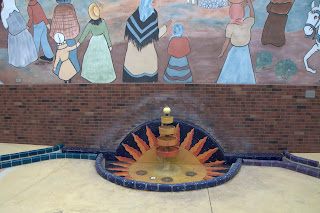 |
| Heritage Walkway, Artesia |
 |
| Heritage Walkway, Artesia |
 |
| Heritage Walkway, Artesia |
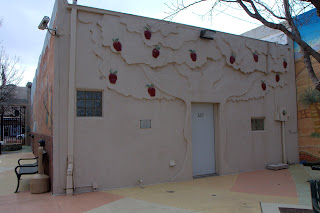 |
| Heritage Walkway, Artesia |
Bonsia on Main
Find out more about Artesia, NM:
In New Mexico we were greeted with snow that made the Interstate drive to Gallup my first nightmare. I followed the State Police vehicle with blinking lights to slow the 75 mph to 55 mph. Some cars had skidded off the road, but the 18 wheelers didn’t seem to mind as they zoomed on by.At Gallup and lunch at the Historic El Rancho where many stars stayed while filming western movies between 1930 and 1960, I considered staying put for the day. Advised by a clerk that the highways would be clear ahead and the big storm was to hit late this night, we hit the road and arrived in Bullhead City at dark.
The next day, the big storm of the century hit with mega inches of rain and /or 7 feet of snow causing flash floods, rock slides and closure of Interstates 40, 25, 17,10 and blue highways as 89 and 60. We watched the angry sky and listened to the wind and were glad we followed the advice to leave Gallup.
Subscribe to:
Posts (Atom)




.jpg)
.JPG)


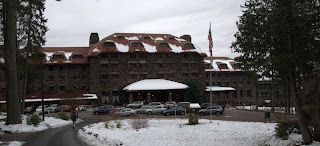
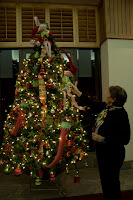

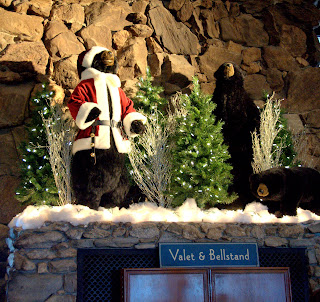








.JPG)


